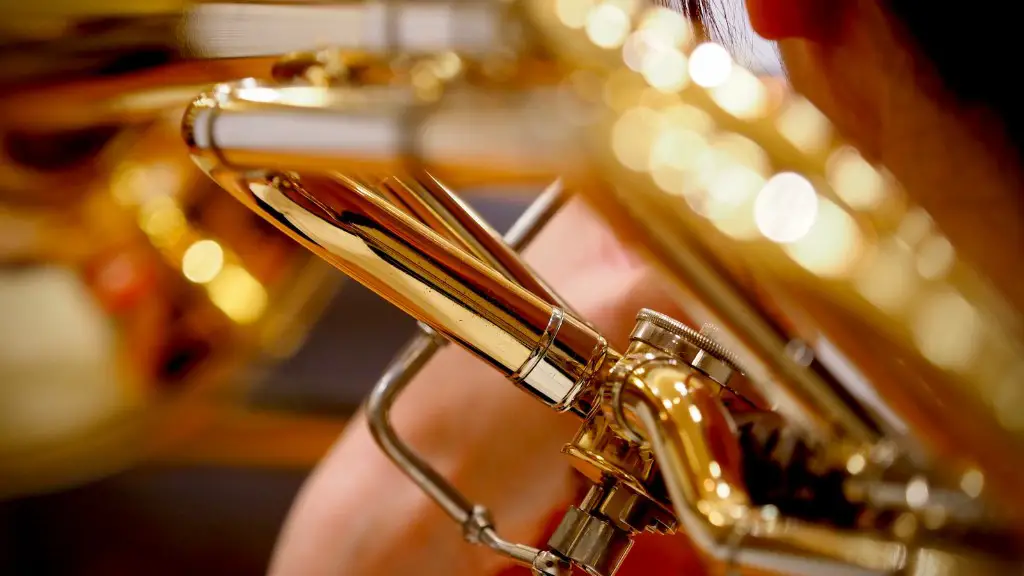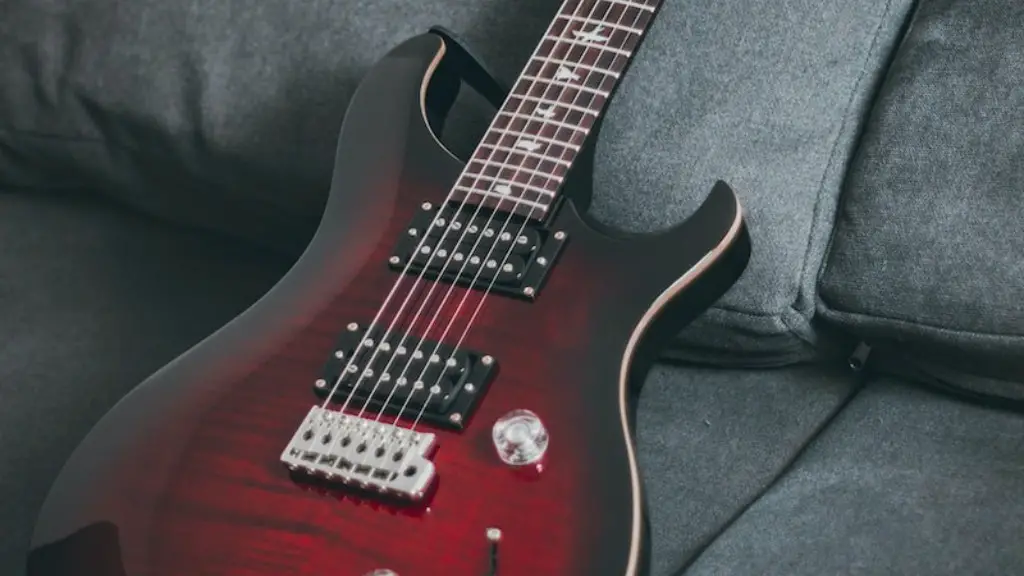Playing the trumpet requires proper posture and technique. One of the most important aspects of playing the trumpet is learning how to buzz on a trumpet mouthpiece.
Buzzing on a trumpet mouthpiece involves creating vibrations with the lips by humming or making a buzzing sound without actually playing any notes. This is an important part of learning how to play the trumpet as it helps build up strength and endurance in your embouchure, which is the muscle used to control your sound.
To buzz, begin by putting your lips together and forming an oval shape. Then, gently hum or make a buzzing sound while keeping your lips in position. You can practice this exercise by using a metronome and increasing your speed over time.
Begin with slower speeds and gradually increase as you get more comfortable with buzzing. Make sure to keep your mouth muscles relaxed and don’t over-exert yourself as you practice this exercise. Doing this will help you develop better control of your embouchure and ultimately improve your trumpet playing.
How to Buzz on a Trumpet Mouthpiece
Breathing correctly is essential when buzzing on a trumpet mouthpiece. Start by taking a deep breath in through your nose and exhale slowly through your mouth. When exhaling, use the muscles in your diaphragm to push the air out. Next, place your lips gently around the rim of the mouthpiece. Make sure that your lips are relaxed and not tense. Then, place the tip of your tongue lightly against the back of your teeth and blow air into the mouthpiece like you would when speaking. You should feel a slight vibration of air as you blow into it. Try varying the speed and intensity of your breath to get different pitches and tones from the buzz.
To get a good buzz sound, make sure to use good embouchure (lip position). Your upper lip should be slightly curved inward while your lower lip should be slightly curved outwards. This will help to create an even sound across all notes. You may need to adjust the angle of your lips slightly until you find the right embouchure for you. Don’t get discouraged if it takes some practice! With some time and patience, you will be able to master buzzing on a trumpet mouthpiece like a pro!
How to Create a Buzzing Sound on a Trumpet Mouthpiece
Creating a buzzing sound on a trumpet mouthpiece is an important skill for any trumpeter. To achieve this effect, you’ll need the right technique and practice. Start by ensuring the mouthpiece is properly inserted into the instrument. You’ll want to ensure it’s not too tight or too loose, as this can affect the sound you produce. Then, form your embouchure – the shape you make with your lips and tongue when you play – so that your lips are slightly curved and that your tongue is resting against the bottom of your mouth. It’s important to keep your lips relaxed but firm.
Next, blow air into the instrument in short bursts with some pressure behind it. You should feel the vibration of your lips against each other as you do this. The buzzing sound should start to emerge as you continue to practice this technique. As you become more comfortable with it, try varying your embouchure and airflow to control the pitch and volume of the buzz. Experiment with different techniques until you find one that works best for you. With enough practice, you can soon create a clear buzzing sound on a trumpet mouthpiece!
Posture and Breathing Techniques for Buzzing on a Trumpet Mouthpiece
Buzzing on a trumpet mouthpiece requires correct posture and breathing techniques to produce the best sound. Start by standing up straight with your feet shoulder-width apart and your shoulders relaxed. Your arms should be held out in front of you at a 90 degree angle. Then, bring the trumpet mouthpiece to your lips and take in a slow, deep breath through your nose. Make sure to exhale slowly as you play.
When playing, you should keep your lips firm around the mouthpiece while keeping your jaw slightly relaxed. This will create a buzzing sound as you blow into the mouthpiece. You can adjust the buzz by controlling the pressure of your breath and changing the tension of your lips. Experiment with different levels of pressure to produce different sounds until you find one that suits you best. Remember: practice makes perfect!
Practicing Exercises for Better Embouchure
Developing proper embouchure is the foundation of playing a trumpet. In order to buzz on a trumpet mouthpiece, you need to practice and build up your embouchure strength. Your lips need to be strong enough to maintain the buzzing sound at a steady pitch. To build your embouchure strength, start by practicing short buzzing exercises. Start by lightly buzzing on the mouthpiece with your lips and gradually increase the intensity as your muscles become stronger.
Make sure you are using proper posture when practicing these exercises. Sit up straight with your shoulders back and keep your neck straight. This will ensure that you are using the most efficient form and maximize the amount of air that comes through the mouthpiece. After each exercise, take a few breaths to relax and refocus before moving onto the next exercise.
Try different exercises such as long tones, lip slurs, and articulations to build up your embouchure strength. Focus on maintaining a steady pitch throughout each exercise and really concentrate on controlling your air flow while buzzing on the mouthpiece. With consistent practice, you will soon be able to sustain a steady pitch while playing trumpet!
Different Types of Vibrato
Vibrato is an essential technique used by trumpet players to create a more expressive sound. The three main types of vibrato used on the trumpet are lip vibrato, air vibrato, and finger vibrato. Lip vibrato is created by using the muscles in the lips to vary the pitch of a note. Air vibrato is created by varying the amount of air being blown through the instrument. Finger vibrato is created by pressing and releasing a valve rapidly with one or two fingers. Each type of vibrato has its own unique characteristics that can be explored and mastered.
Lip vibrato can produce a wide range of effects, from subtle variations in pitch to full-blown warbles. Air vibrato produces an effect that is similar to how singers use their voice to produce a tremolo effect. Finger vibrato produces a faster, more pronounced sound than lip or air vibratos, making it well suited for jazz styles. All three types of vibratos require practice and experimentation in order to be mastered. The best way to learn how to buzz on a trumpet mouthpiece is to practice each type of vibrato individually until you have perfected them all.
Adjusting Pitch and Volume Control
Buzzing on a trumpet mouthpiece is a great way to get a better sound out of your instrument. By understanding how to adjust the pitch and volume control, you can ensure that you are playing in tune and at the desired level of volume. The first step is to use the tuning slide of the trumpet. Adjusting this slide affects the length of the trumpet’s air column, which changes the pitch. You can then adjust the volume by using your embouchure, which is how you position your lips on the mouthpiece. Additionally, you can use a mute or cup mute for further adjustments.
Finally, practice buzzing at different pitches and volumes until you achieve that perfect sound. If you find yourself having difficulty buzzing at higher volumes, try changing up your embouchure or adding more pressure with your lips on the mouthpiece. With enough practice, playing with a great tone will come naturally!
To Sum It All Up
Buzzing on a trumpet mouthpiece is an important skill for brass players, as it helps them to develop their embouchure and sound production. The process involves making an “mmmmm” sound with your mouth while covering the trumpet’s mouthpiece with your lips and blowing air into the instrument. To achieve the best possible buzz, it is important to use correct posture, breath support, lip placement, and an appropriate amount of air pressure. Practicing with a metronome can also help you become more consistent in your buzz. With patience and practice, buzzing on a trumpet mouthpiece can be an enjoyable experience that will benefit your playing in the long run.




